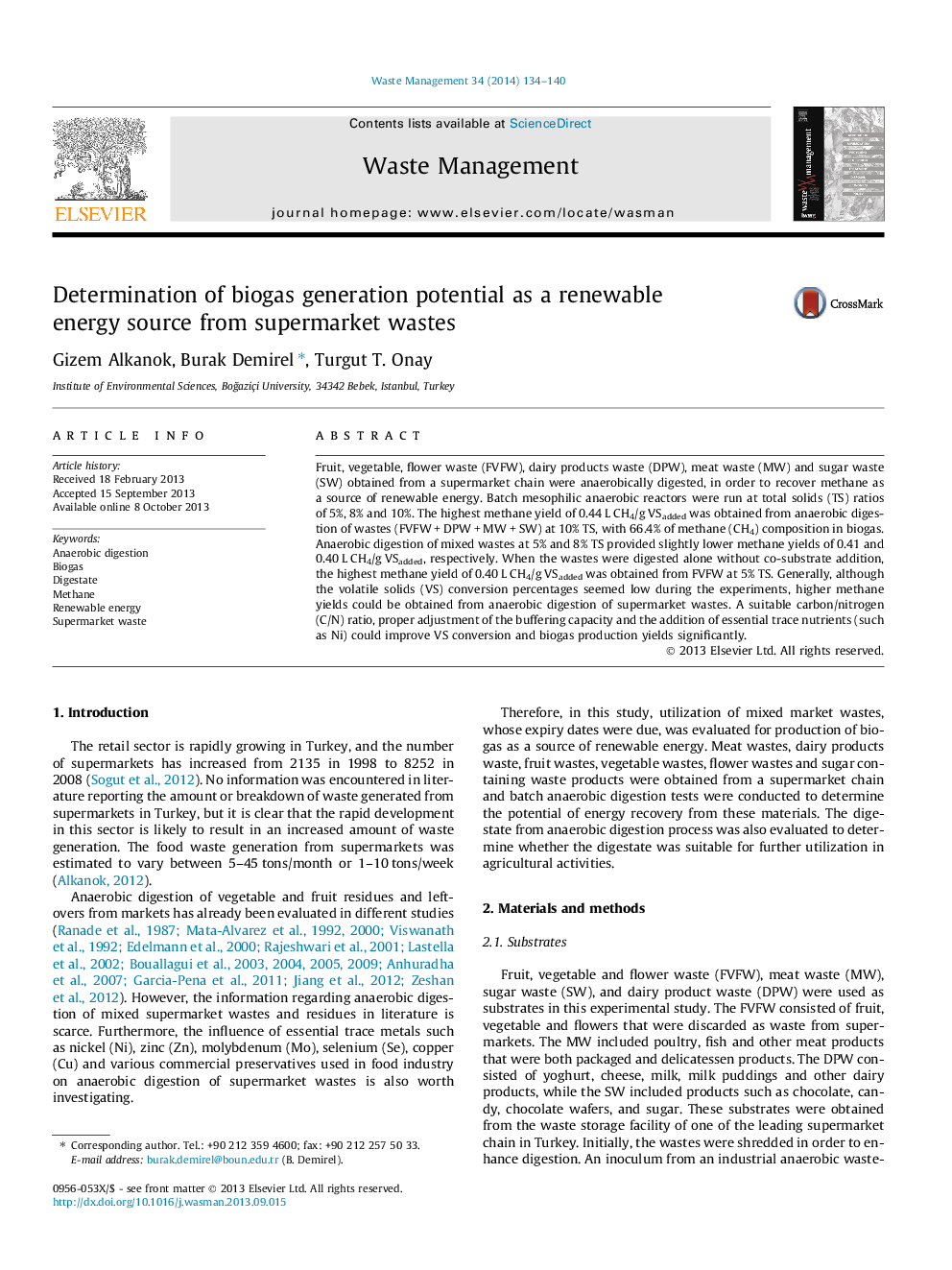| Article ID | Journal | Published Year | Pages | File Type |
|---|---|---|---|---|
| 6355020 | Waste Management | 2014 | 7 Pages |
â¢Disposal of supermarket wastes in landfills may contribute to environmental pollution.â¢High methane yields can be obtained from supermarket wastes by anaerobic co-digestion.â¢Fruit and vegetable wastes or dairy products wastes could individually be handled by a two-stage anaerobic process.â¢Buffering capacity, trace metal and C/N ratio are essential for digestion of supermarket wastes.
Fruit, vegetable, flower waste (FVFW), dairy products waste (DPW), meat waste (MW) and sugar waste (SW) obtained from a supermarket chain were anaerobically digested, in order to recover methane as a source of renewable energy. Batch mesophilic anaerobic reactors were run at total solids (TS) ratios of 5%, 8% and 10%. The highest methane yield of 0.44 L CH4/g VSadded was obtained from anaerobic digestion of wastes (FVFW + DPW + MW + SW) at 10% TS, with 66.4% of methane (CH4) composition in biogas. Anaerobic digestion of mixed wastes at 5% and 8% TS provided slightly lower methane yields of 0.41 and 0.40 L CH4/g VSadded, respectively. When the wastes were digested alone without co-substrate addition, the highest methane yield of 0.40 L CH4/g VSadded was obtained from FVFW at 5% TS. Generally, although the volatile solids (VS) conversion percentages seemed low during the experiments, higher methane yields could be obtained from anaerobic digestion of supermarket wastes. A suitable carbon/nitrogen (C/N) ratio, proper adjustment of the buffering capacity and the addition of essential trace nutrients (such as Ni) could improve VS conversion and biogas production yields significantly.
